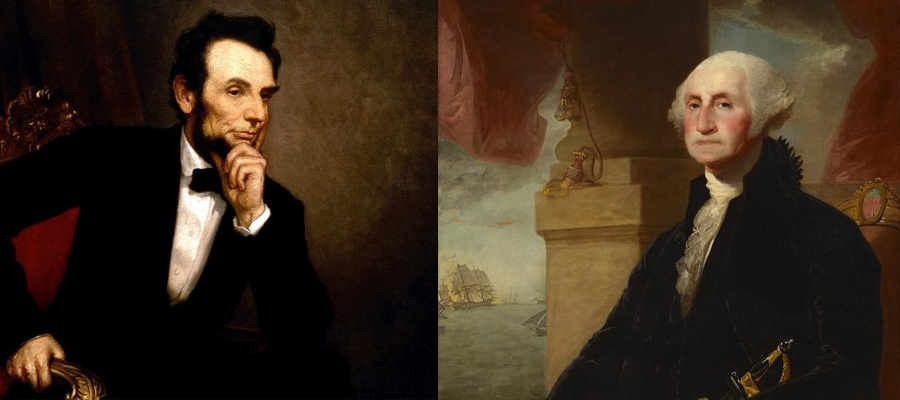
On February 17, the US celebrates President’s Day, which since 1971 has been fixed to third Monday in the month. The date, not coincidentally, falls between the birthdays of Abraham Lincoln and George Washington, respectively. Holiday aside, the elections of America’s two most famous presidents are notable for their many electoral anomalies.
In the country’s first presidential election, George Washington did not earn a single popular vote. None. That’s because citizens didn’t vote at that time—only electors designated by each state did. (It was the precursor to the Electoral College). In this presidential race and all others until 1804, electors voted for two individuals without specifying the office. The two candidates receiving the most votes were simply assigned the office of president and vice president, respectively.
Some 13 years after declaring independence, 69 state electors from 10 states cast those first presidential votes. Three of the original 13 states did not vote. New York’s legislature could not agree on its electors and thus abstained. North Carolina and Rhode Island were not eligible to vote as neither had ratified the Constitution.
Washington was the unanimous choice, as he was when he was re-elected in 1792 with 132 electoral votes from 15 states. No other president has ever been unanimously chosen by the Electoral College.
Unlike today’s automated elections, the results of the first election took quite some time be tallied after the February 4 vote (two months and two days, to be exact). Washington wasn’t notified of his victory until April 14!
Voting in the US had changed substantially by the time Lincoln won his first term in 1860. America had been counting the popular vote for nearly 40 years. The Electoral College largely followed the people’s choices. At that time presidential candidates did not campaign for themselves, but instead had others speak on their behalf. In fact, most candidates abstained from voting in their own presidential race!
Lincoln was the first president from the Republican Party, which had been in existence less than 10 years in 1860. That year, some 4 million white males (remember, they were the only ones allowed to vote) from 33 states voted. Lincoln took more than 1.8 million votes, but it was just 40% of the popular vote as there were four major candidates running.
At that time there were 303 electoral votes, 152 needed to win. Lincoln and vice-presidential candidate Hannibal Hamlin received 180 electoral votes. They won all the free states but no slave states.
Lincoln’s re-election took place in the midst of American’s civil war. This election was particularly interesting because it represented just the 25 Union states. The 11 states in the Confederacy were not included.
Running with a new vice-presidential candidate, Lincoln garnered 2.2 million votes; 55% of the popular ballots cast. In an election first, Union states allowed active military personnel to return home to vote. (Too bad there wasn’t remote voting—or even mail in ballots—at the time.)
Lincoln won the electoral college 212–21 with 250 votes available. If that math seems wonky, it is. The aggregate did not count 17 votes from Tennessee and Louisiana. The two states had been captured by Union forces early in the war, but neither state had been formally re-admitted to the Union. Thus, Congress rejected their votes. (Those votes all went for Lincoln but would not have changed the outcome, regardless.)
America’s two most well-known presidents have election histories chocked full of little-known election facts that you can share at your President’s Day celebration.